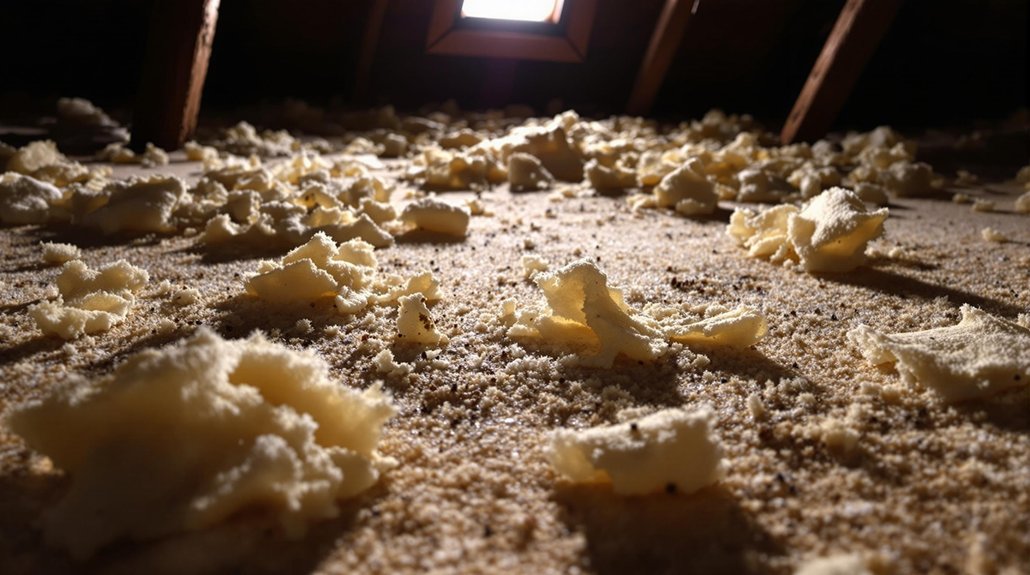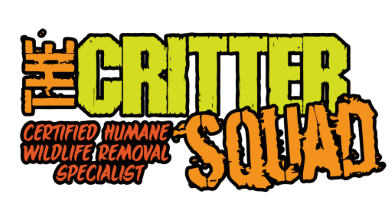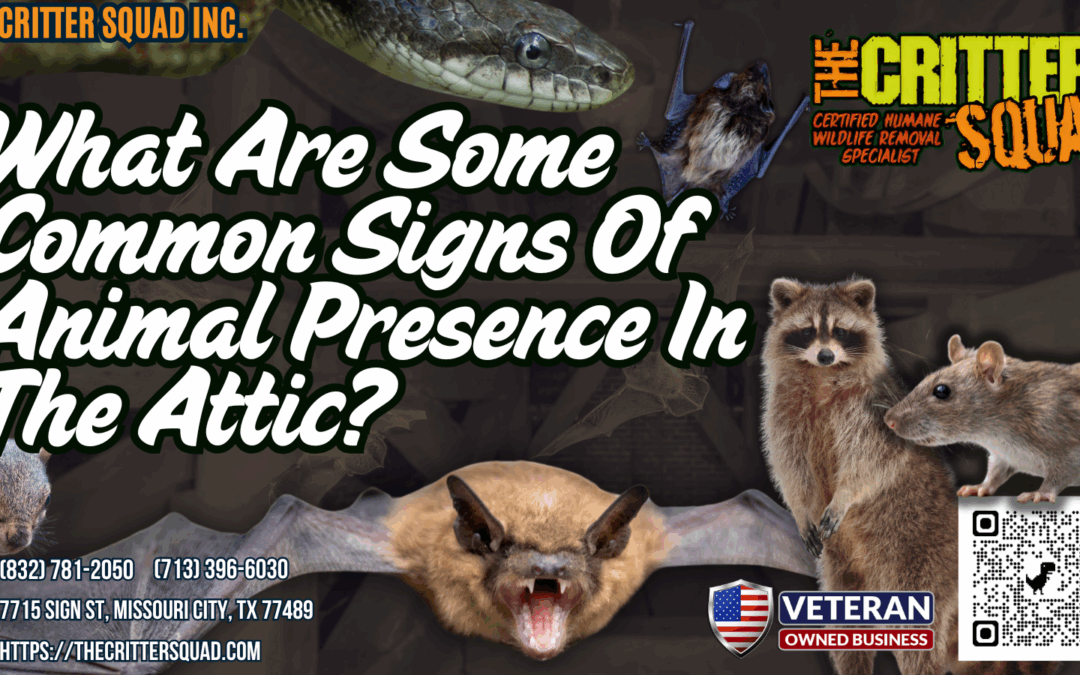Common signs of animal presence in the attic include unusual noises, such as scratching or thumping. People often notice chew marks on wood or insulation. Droppings and urine stains can help identify the type of animal present. Nesting materials, like shredded paper or leaves, also indicate activity. Foul odors may suggest waste or dead animals. Recognizing these signs early is important for taking action. Exploring further can uncover more about managing these issues effectively.
Key Article Highlights
- Noises such as scratching, scurrying, or thumping at night indicate potential animal activity in the attic.
- Chew marks on wood or insulation suggest animals are gnawing, which can cause damage.
- Droppings of various shapes and sizes can help identify the type of animal present.
- Nesting materials like shredded paper or leaves indicate animals are residing or breeding in the attic.
- Foul odors from waste or dead animals signal an urgent need for investigation and action.
Unusual Noises in the Attic
Unusual noises in the attic can signal the presence of animals. These sounds often occur at night, creating nighttime disturbances that can disrupt sleep. Common noises include scratching, scurrying, or thumping. Such sounds may indicate that animals are moving around, looking for food or shelter. Their behaviors can vary; some may be searching for a place to nest, while others might be playing or fighting. These activities draw attention and raise concerns about potential damage or health risks. It is important to pay attention to these signs. Recognizing raccoon nesting habits can help in identifying the specific animal involved. Additionally, understanding rat behavior can aid in distinguishing between different types of pests. Ignoring these noises may lead to bigger problems later. Being aware of animal activity patterns can assist in timely detection and removal. Awareness can lead to freedom from unwanted guests in the attic.
Signs of Gnawing and Chewing
Signs of gnawing and chewing are often clear indicators of animal presence in the attic. Chew marks on wood or insulation can signal that animals are trying to enter or nest. Additionally, scratching noises may accompany these marks, suggesting active chewing behavior.
Chew Marks Observations
Many homeowners may notice chew marks as a clear indication of animal activity in the attic. Chew mark identification helps in recognizing the type of animal present. Various animals leave different patterns, which can assist in their assessment. Additionally, chew damage assessment is essential for understanding the extent of the problem.
| Animal Type | Typical Chew Marks | Potential Damage |
|---|---|---|
| Rodents | Small, round holes | Wires, insulation |
| Squirrels | Larger, irregular marks | Roof damage |
| Raccoons | Deep, claw-like scratches | Structural damage |
| Bats | Small, uneven holes | Air leaks |
| Opossums | Jagged, rough edges | Insulation disruption |
Recognizing these signs can help homeowners take action quickly.
Scratching Noises Detection
Chew marks are not the only indicators of animal presence in the attic. Scratching sounds can also signal that animals are nearby. These noises often occur at night, pointing to nocturnal activity. Rodents or small mammals may be the culprits, moving around and searching for food or nesting materials. Homeowners might hear these scratching sounds in the walls or ceilings, especially during quiet hours. The noises can vary in intensity, from soft rustling to loud scrapes. Identifying these sounds is important for addressing potential infestations. Ignoring such signs can lead to larger problems in the future. Early detection can help maintain a peaceful home environment and guarantee freedom from unwanted guests in the attic.
Droppings and Urine Stains
Droppings and urine stains are clear indicators of animal activity in the attic. Homeowners can look for droppings identification to determine what type of animal may be present. Different animals leave different shapes and sizes of droppings, which can help in identifying them. Urine detection is also important, as it often leaves yellow stains on surfaces. These signs can point to larger infestations, such as raccoons or squirrels, which may cause significant damage. Finding these stains and droppings should prompt immediate action. Ignoring these indicators can lead to bigger problems in the home. Addressing the issue quickly can help maintain a safe and clean living environment. Regular checks can prevent unwanted animal guests in the attic. Additionally, understanding rodent removal techniques can be crucial in effectively eliminating these pests. Recognizing early warning signs can help homeowners implement humane bat removal and control measures before the problem escalates. Being aware of squirrel activity signs can further aid in early detection and prompt humane removal efforts.
Nesting Materials and Debris
Nesting materials and debris are strong signs of animal presence in the attic. Many animals exhibit nesting behavior, which involves gathering various materials to create a safe space for their young. Common material sources include shredded paper, leaves, twigs, and fabric. These items may be found in small piles or scattered throughout the attic. The presence of such debris suggests that animals are actively using the space for shelter or breeding. Homeowners should pay attention to these signs. If nesting materials are discovered, it is essential to investigate further. Ignoring this issue can lead to more significant problems in the future. Identifying animal presence early allows for appropriate action to reclaim the attic and restore peace.
Damage to Insulation

Damage to insulation is a clear indicator of animal activity in the attic. When animals enter, they often disturb the insulation for nesting or shelter. This can lead to insulation damage that is visible and may require repair. Chewed or torn insulation is a common sign of animal behavior, as rodents and other pests tend to gnaw on materials. Additionally, the insulation may be compressed or displaced, affecting its effectiveness. Homeowners should pay attention to these signs, as insulation damage can lead to increased energy costs and reduced comfort. Addressing animal presence early can help prevent further damage and maintain a safe living environment. Observing insulation closely can reveal important clues about any unwanted attic guests.
Tracks and Footprints
Tracks and footprints can provide clear evidence of animals in the attic. These signs can help identify the type of wildlife taking up residence. Animal tracks may appear as small imprints in dust or debris. They often show the shape of paws or claws. Wildlife footprints can vary in size and pattern, depending on the animal. For example, a raccoon’s tracks are larger and more distinct than those of a mouse. Observing these footprints can help determine how many animals are present. Homeowners should look carefully at the ground or surfaces in the attic. Finding fresh tracks can indicate recent activity. This knowledge empowers homeowners to take action and reclaim their attic space from unwanted guests.
Foul Odors and Smells
Animals in the attic often leave behind more than just physical signs. One common sign is the presence of foul odors. These smells can come from animal waste, urine, or dead animals. Such odors indicate that animals are living or have lived in the attic. Different animals have distinct behaviors that can also contribute to these smells. For example, rodents may leave behind droppings, while larger animals might cause more noticeable odors from their waste. Homeowners should pay attention to these unpleasant scents, as they often signal a problem that needs addressing. Ignoring foul odors can lead to larger issues in the home, impacting both health and comfort. Additionally, animal behavior patterns can help identify which type of creature might be responsible. It is essential to investigate and resolve these signs promptly.
Frequently Asked Questions
How Can I Prevent Animals From Entering My Attic?
Every year, about 20% of homes face animal intrusion issues. To prevent this, homeowners should use exclusion methods effectively. Sealing openings will deter animals, ensuring a peaceful and undisturbed attic space for everyone.
What Types of Animals Commonly Infest Attics?
Common attic infestations include squirrels and raccoons. Squirrel infestations often involve loud noises during the day. Raccoon behavior, typically nocturnal, can cause disturbances at night, leading to significant damage if not addressed promptly.
Are Certain Times of Year More Prone to Infestations?
Ah, the annual wildlife gala! Certain times of year witness peak activity, as seasonal patterns dictate. Spring and fall often see more infestations, as critters seek cozy shelter for nesting or hibernation. Nature’s little invaders, indeed!
Can Animals Cause Structural Damage to My Home?
Animals can indeed cause structural damage to a home. Their behavior may lead to chewing, nesting, or burrowing, which can create significant home repair issues. It’s important to address any animal presence promptly to prevent further damage.
Should I Contact a Professional for Animal Removal?
Considering animal removal, one should weigh cost considerations and removal methods available. Professionals often provide effective solutions, ensuring safety and efficiency. It may be beneficial to seek expert help for a thorough assessment and resolution.




























